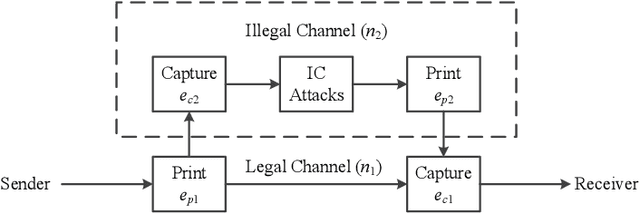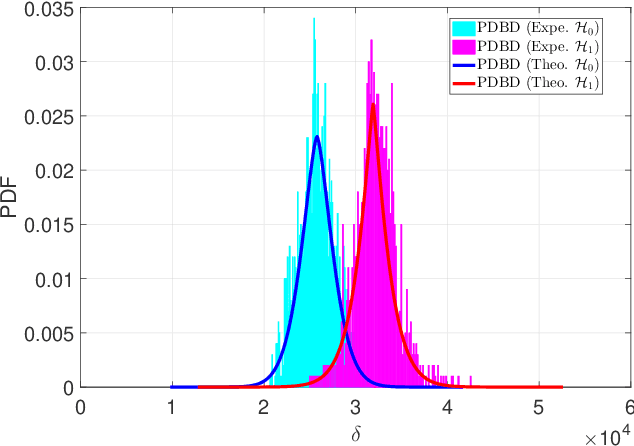Qiqi Zhang
Detection of Information Hiding at Anti-Copying 2D Barcodes
Mar 20, 2020



Abstract:This paper concerns the problem of detecting the use of information hiding at anti-copying 2D barcodes. Prior hidden information detection schemes are either heuristicbased or Machine Learning (ML) based. The key limitation of prior heuristics-based schemes is that they do not answer the fundamental question of why the information hidden at a 2D barcode can be detected. The key limitation of prior MLbased information schemes is that they lack robustness because a printed 2D barcode is very much environmentally dependent, and thus an information hiding detection scheme trained in one environment often does not work well in another environment. In this paper, we propose two hidden information detection schemes at the existing anti-copying 2D barcodes. The first scheme is to directly use the pixel distance to detect the use of an information hiding scheme in a 2D barcode, referred as to the Pixel Distance Based Detection (PDBD) scheme. The second scheme is first to calculate the variance of the raw signal and the covariance between the recovered signal and the raw signal, and then based on the variance results, detects the use of information hiding scheme in a 2D barcode, referred as to the Pixel Variance Based Detection (PVBD) scheme. Moreover, we design advanced IC attacks to evaluate the security of two existing anti-copying 2D barcodes. We implemented our schemes and conducted extensive performance comparison between our schemes and prior schemes under different capturing devices, such as a scanner and a camera phone. Our experimental results show that the PVBD scheme can correctly detect the existence of the hidden information at both the 2LQR code and the LCAC 2D barcode. Moreover, the probability of successfully attacking of our IC attacks achieves 0.6538 for the 2LQR code and 1 for the LCAC 2D barcode.
Improving brain computer interface performance by data augmentation with conditional Deep Convolutional Generative Adversarial Networks
Jun 19, 2018



Abstract:One of the big restrictions in brain computer interface field is the very limited training samples, it is difficult to build a reliable and usable system with such limited data. Inspired by generative adversarial networks, we propose a conditional Deep Convolutional Generative Adversarial (cDCGAN) Networks method to generate more artificial EEG signal automatically for data augmentation to improve the performance of convolutional neural networks in brain computer interface field and overcome the small training dataset problems. We evaluate the proposed cDCGAN method on BCI competition dataset of motor imagery. The results show that the generated artificial EEG data from Gaussian noise can learn the features from raw EEG data and has no less than the classification accuracy of raw EEG data in the testing dataset. Also by using generated artificial data can effectively improve classification accuracy at the same model with limited training data.
 Add to Chrome
Add to Chrome Add to Firefox
Add to Firefox Add to Edge
Add to Edge